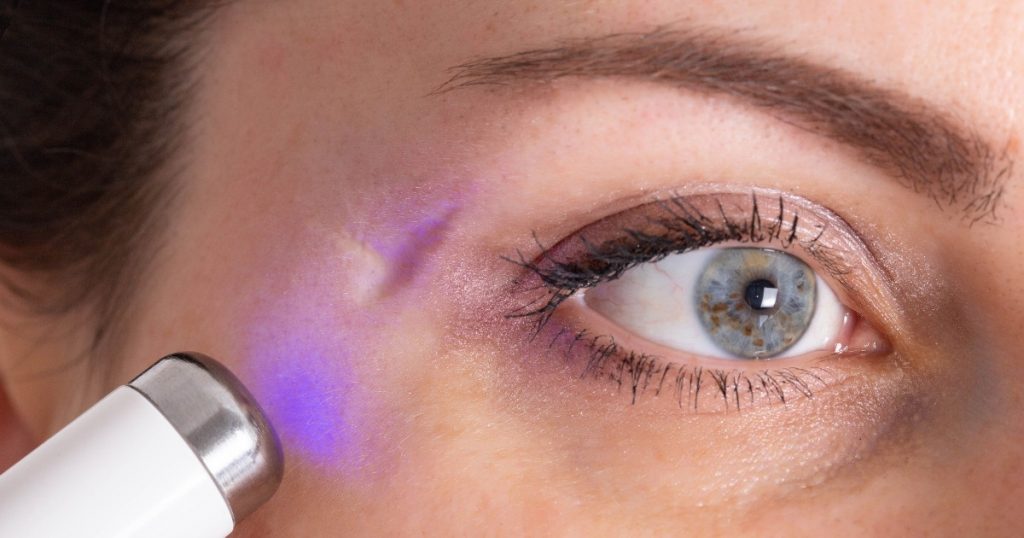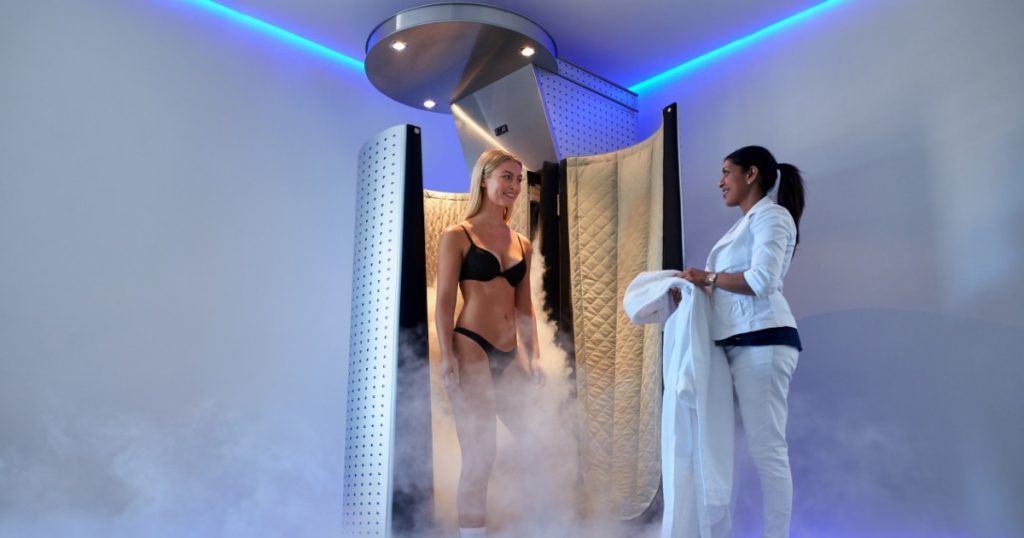Cryotherapy scar removal involves using extreme cold to eliminate abnormal skin tissue that has formed a scar. Specifically, liquid nitrogen is applied topically to freeze and destroy scar cells through direct and indirect mechanisms at the cellular level. While used to address various benign skin growths, cryotherapy holds promise for removing troublesome raised dermal scars known as keloids.
Despite increasing adoption worldwide, clinical data on cryotherapy for keloids remains limited compared to surgery, steroids, and laser therapy. This article reviews the current evidence base for utilising cryotherapy keloid removal.
Key topics covered include:
- Proposed biological mechanisms of action
- Clinical research on real-world efficacy and safety data
- Optimal dosing protocols
- Patient selection criteria
All of this is done by applying state-of-the-art freezing techniques as a noninvasive method of flattening pathological scar overgrowths.
What is Cryotherapy Scar Removal?
Cryotherapy is a medical treatment that uses extreme cold to remove scar tissue. Liquid nitrogen is typically used to freeze and destroy abnormal skin cells forming a scar.
Book A Consultation With Dr Shehzadi Tasneem
Top-rated Plastic Surgeon For Keloid in Dubai
Installment Plan Available
Dubai Keloid Therapy is a treatment in dubai that helps to reduce and remove keloid scars, which are raised areas of skin caused by an overgrowth of scar tissue.
- Works by freezing skin cells and cutting off their blood supply to induce localised damage and eventual shedding of scarred skin
- Considered a minimally invasive procedure with little to no downtime
- It can be used to treat certain types of raised or discoloured scars, including keloids and hypertrophic scars
How Does Cryotherapy Work to Remove Scars?
In cryotherapy for scars, the scarred area is frozen with brief and concentrated bursts of liquid nitrogen. This freezing causes scar tissue cells to rupture and die off.
- Liquid nitrogen is applied using a spray gun or cryoprobe to target the scarred skin. precisely
- Usually, it involves 2 freeze-thaw cycles to ensure adequate destruction of abnormal fibrous tissues.
- The damaged tissue then shrivels and sheds off naturally over a few weeks.
- New skin eventually forms to replace the scar as part of the healing process.
Evaluating the Effectiveness of Cryotherapy on Keloids

Research shows that cryotherapy can flatten and shrink keloid scars in many patients, especially when treated early.
- Clinical studies find 50-75% keloid flattening after approximately 6 cryotherapy sessions.
- Tremendous success is shown on younger, smaller keloids than larger, mature scars.
- Works best on actively growing keloids rather than long-standing Static scars
- Shows comparable efficacy to other treatments like steroid injections and radiation
Comparing Cryotherapy to Other Scar Removal Techniques

Cryotherapy offers some advantages over procedures like surgery and laser therapy for certain types of scarring.
| Approach | Benefits | Limitations |
| Cryotherapy | Minimally invasive, affordable | Hypopigmentation risk |
| Excision | High and consistent success | Invasive, visible scarring |
| Laser | Precise application | Hyperpigmentation risk |
Cryotherapy offers a less invasive approach to scar removal than excision but risks pigment changes. Lasers also remake skin texture with some similar tradeoffs.
What to Expect During and After Cryotherapy Treatment
The cryotherapy procedure is brief, and most patients tolerate it well. Side effects are mild and temporary.
| Timing | Possible Reactions | Self-Care Tips |
| During procedure | Brief, intense stinging/aching | Take analgesics if needed |
| First 72 hours | Swelling, reddening, clear blisters | Use antibiotic ointment, avoid picking |
| First week | Weeping, irritation, itching | Keep clean & moisturised |
| After 2 weeks | Gradual drying/flaking of dead skin | Gently remove loose fragments |
Patients may experience considerable irritation for several weeks as cryotherapy takes effect.
Benefits and Advantages of Using Cryotherapy

Cryotherapy offers a non-surgical approach to improve scar appearance with little downtime.
- Non-invasive is an outpatient procedure with no general anaesthesia needed
- Short treatment sessions allow rapid return to normal activities
- No surgical incisions/suture lines
- Affordable treatment cost compared to other techniques
Optimal Timing and Frequency for Cryotherapy Sessions
Most experts recommend frequent sessions in the early phase of scar development for maximal results.
| Variable | Recommendation | Rationale |
| Scar Age | < 3 years duration | Better response in early scars |
| Session Frequency | Every 3-4 weeks | Allows wound healing between treatments |
| Session Number | 5-6 initial sessions | Ensures full therapeutic effect |
Research supports beginning cryotherapy soon after scar onset and repeating sessions at 3-4 week intervals for maximal results. Ear keloid treatment helps remove extra scar tissue that grows on the ear Doctors can use surgery creams or injections for ear keloid treatment
Scar Types Best Suited for Cryotherapy Removal
Raised inflammatory scars like newer keloids and hypertrophic scars respond best to cryotherapy.
- Early keloids: <3 years duration, small thickness <5mm
- Active, fast-growing keloids have better outcomes
- Hypertrophic surgical or trauma scars
- Avoided atrophic/sunken scars and older mature scars
This clinical review supports cryotherapy as a beneficial treatment for certain abnormal scar overgrowths, especially keloids. By freezing scar tissue to temperatures lethal for fibroblasts and vascular cells, cryotherapy can effectively flatten problematic scars in many patients.
As a result of multiple freeze-thaw cycles applied across serial sessions of cryotherapy, keloid thickness and symptoms are significantly reduced. Additionally, cryotherapy scar removal and keloid removal demonstrate better outcomes on more minor, younger scars less than a few years old.
While not curative for severely mature keloids, cryotherapy keloid removal represents an exciting minimally invasive advancement for select cases, either as monotherapy or combined with intralesional steroids.
Patients should thoroughly discuss options with their dermatology provider to determine if cryotherapy aligns with their specific scar removal goals. Ongoing investigation continues to optimise protocols and technology for maximising the promise of cryotherapy in ameliorating disfiguring keloids—exciting advancement in lessening disfiguring scars for appropriate candidates.
Dr Shehzadi Tasneem Sultan, a prominent plastic surgeon, specialises in body contouring and facial rejuvenation. With advanced training and extensive surgical and non-surgical experience, she focuses on enhancing natural beauty and confidence through personalised care.
Looking for expert plastic surgery solutions? Book a consultation with Dr Shehzadi Tasneem Sultan for customised aesthetic enhancements. Start your journey towards improved natural beauty and confidence with a leading surgeon. Book now.












